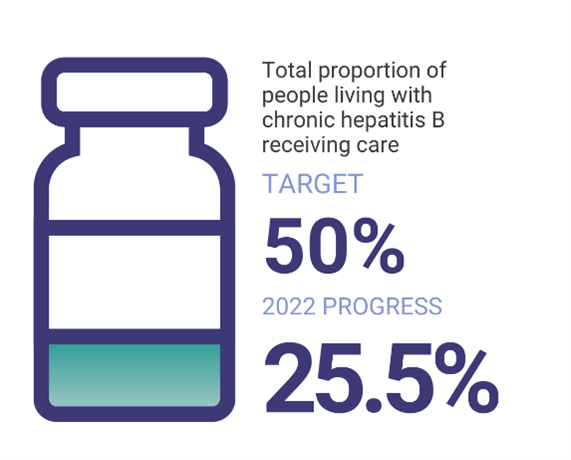The most recent National Reports for the Viral Hepatitis Mapping Project have been released, including data up to the end of 2022, aligning with the end of the Third National Hepatitis B Strategy and Fifth National Hepatitis C Strategy.
Based on previously reported trends, it is no surprise that nationally we have largely not met the 2022 targets. Despite this, there is evidence of progress, and numerous examples of localised innovative care delivery leading to positive trends and in some cases targets being met.
These reports map up to date data on hepatitis B prevalence, diagnosis, treatment, care and vaccination by Primary Health Network (PHN) and Statistical Area Level 3 (SA3), and hepatitis C prevalence and treatment uptake at a PHN level. Information is also included on liver cancer and serology testing trends which help contextualise the data and provides further valuable information.
The launch of the two Reports is an opportunity to reflect on national progress towards targets so far, and to look towards the future and consider what more we can be doing with the imminent release of the new National Viral Hepatitis Strategies.
Hepatitis C treatment
As reported in the Kirby Institute Hepatitis C Annual Surveillance Report, although this 2022 target has not been met nationally, a tremendous 104,404 people have received treatment with direct acting antivirals since 2016. The gradual annual decline in treatment numbers has stabilised with NSW seeing an increase in people treated in 2023 compared to 2022.
Hepatitis B

While no PHNs met the target for engagement in care, two SA3 areas have (East Arnhem and Far North Queensland), and the target was approached in a number of regions in Sydney, Melbourne, and Brisbane. These outcomes reflect the comprehensive, coordinated and community-focused initiatives occurring in the NT Top End and the Far North Queensland region , which are working to engage people living with chronic hepatitis B in ongoing care.

The uptake of treatment for CHB in Australia has increased over time, although needs to improve more rapidly. One PHN, South Western Sydney, met the 20% treatment uptake target at 20.6%. There have also been substantial increases of treatment uptake in some PHNs during the lifetime of the National Hepatitis B Strategy, including Western Victoria PHN (87% increase), Central Queensland, Wide Bay, and Sunshine Coast PHN (81% increase) and Gippsland (78% increase).
This information from the Viral Hepatitis Mapping Project is a powerful tool to be able to re-assess direction with renewed enthusiasm, and guide the implementation of and investment into future targets and strategies nationally and at a local level. The report also provides guidance for intervention, identifying populations and regions where there is a need for prioritisation of hepatitis B due to its disproportionate impact on the local community. This is empahsised by the findings regarding liver cancer incidence, which is highest in those regions where chronic hepatitis B is most common.
Data included in this report can be further explored using the Online Portal, which provides interactive visualisations of these variations. This interactive tool also allows you to compare areas of interest.
Refer to the report here and explore the online portal here.
The Project is a joint initiative of the WHO Collaborating Centre for Viral Hepatitis Epidemiology, The Doherty Institute and ASHM, funded by the Australian Government Department of Health.

